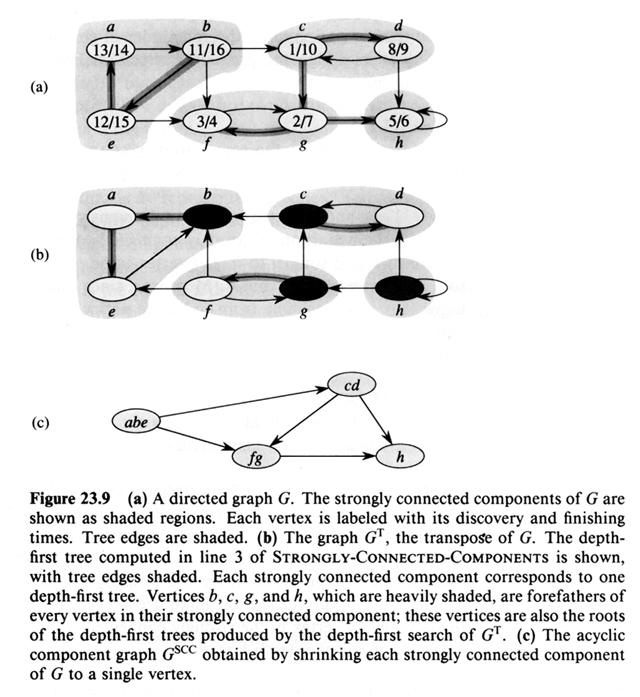Strongly Connected Components
Application of topological sort: decomposing a directed
graph into its strongly connected components
This decomposition is important as it is used to divide a
single directed graph into pieces for further processing. A strongly
connected component of a directed graph G = ( V, E ) is a maximal set of
vertices, U Í V such that "
u, v Î U . u is reachable from v and v is
reachable from u.

The algorithm for finding these strongly connected
components uses the transpose of G, GT.
G = ( V, E ), GT = ( V, ET
), where ET = { ( u, v ): ( v, u ) Î
E }
GT is the same as G except all the arrows
on the edges are reversed. Note: G and GT have the same
strongly connected components. If you can get from u to v and from v to u in
G, you reverse the paths in GT and you can as well.
The strongly connected component algorithm is:
Strongly-Connected-Components ( G )
- Use DFS ( G ) to compute f[u] " u
Î V
- Compute GT
- Execute DFS ( GT ) but instead, in the main DFS loop grab
vertices in the order of decreasing f[u] as computed in DFS ( G )
- Output the vertices if each tree in the depth-first forest of step 3
as a separate strongly connected component.
This algorithm runs in twice the time of DFS ( G ) which is Q
( | V | + | E | )
Can prove that r Î V is in a strongly
connected component that consists of al v Î G
that v can reach in GT (see textbook)
|







